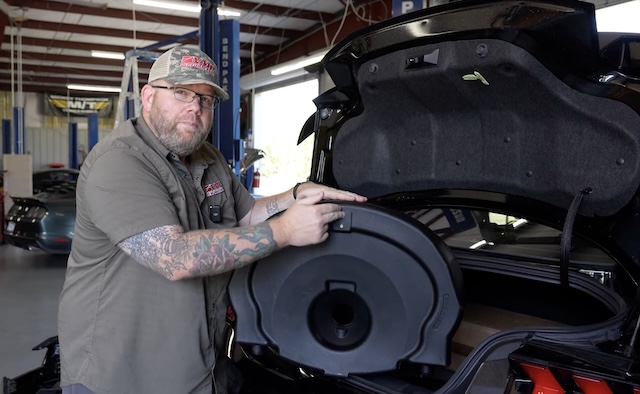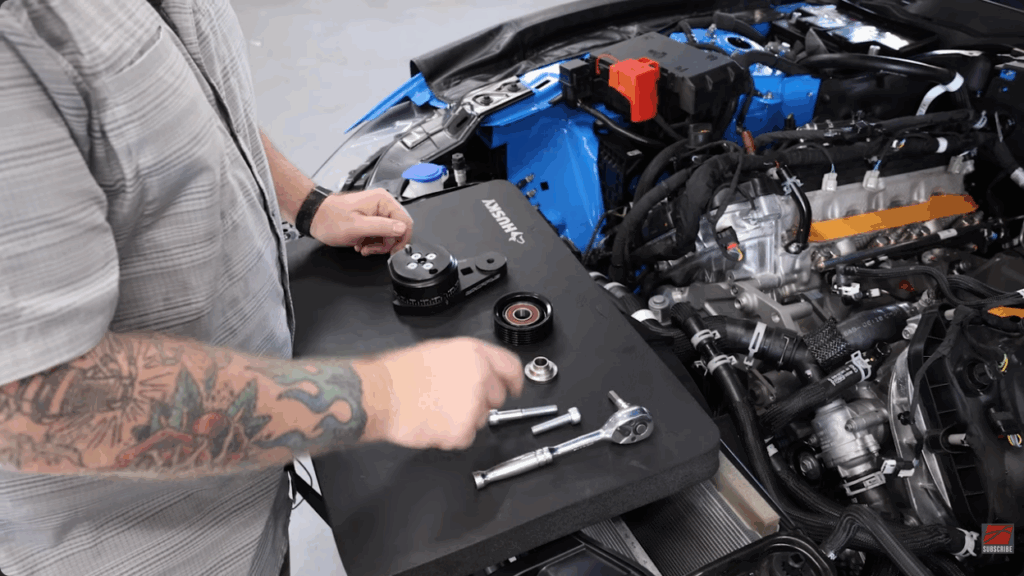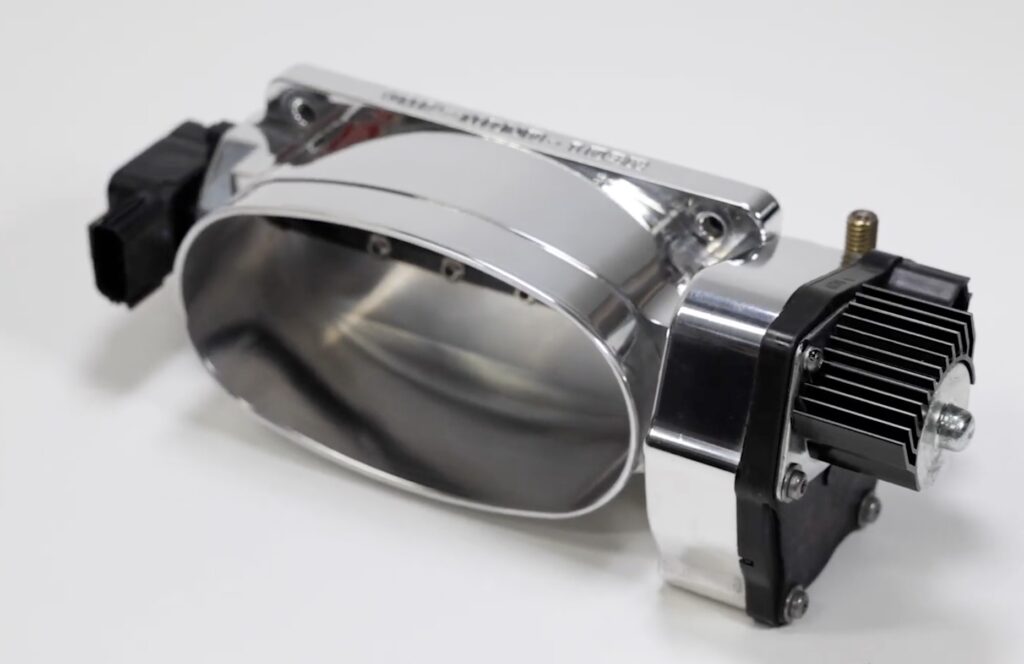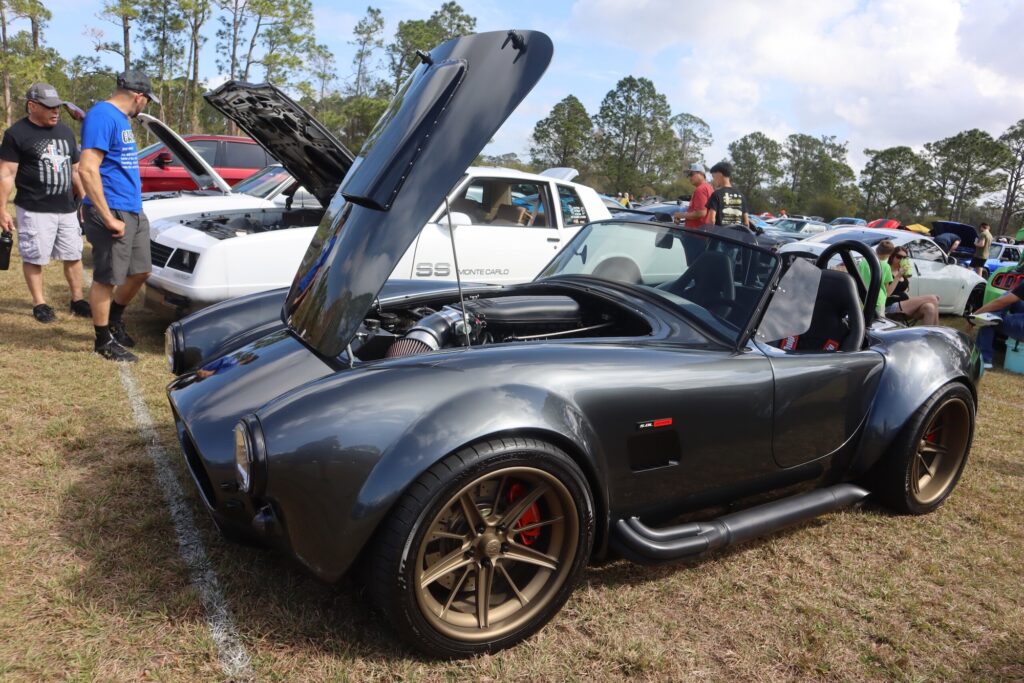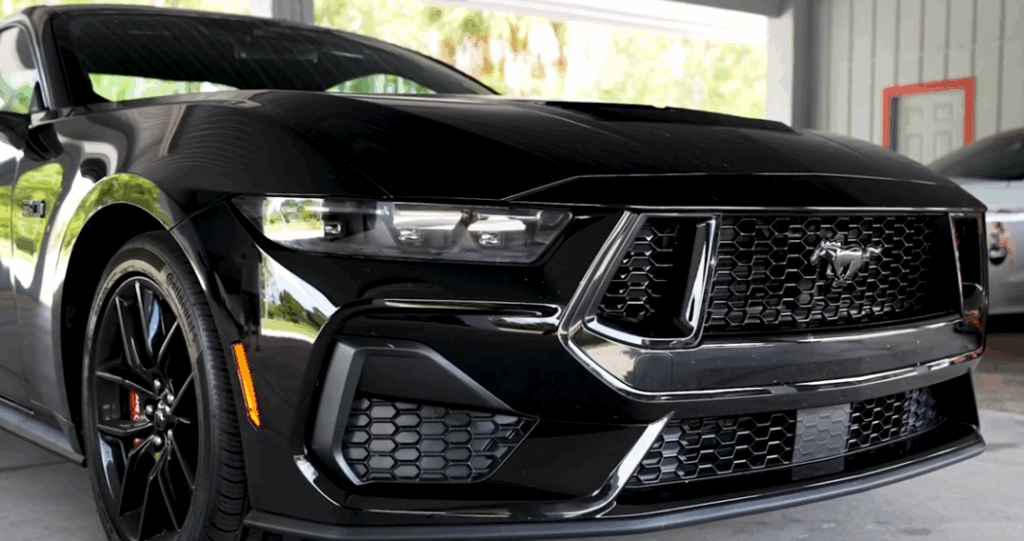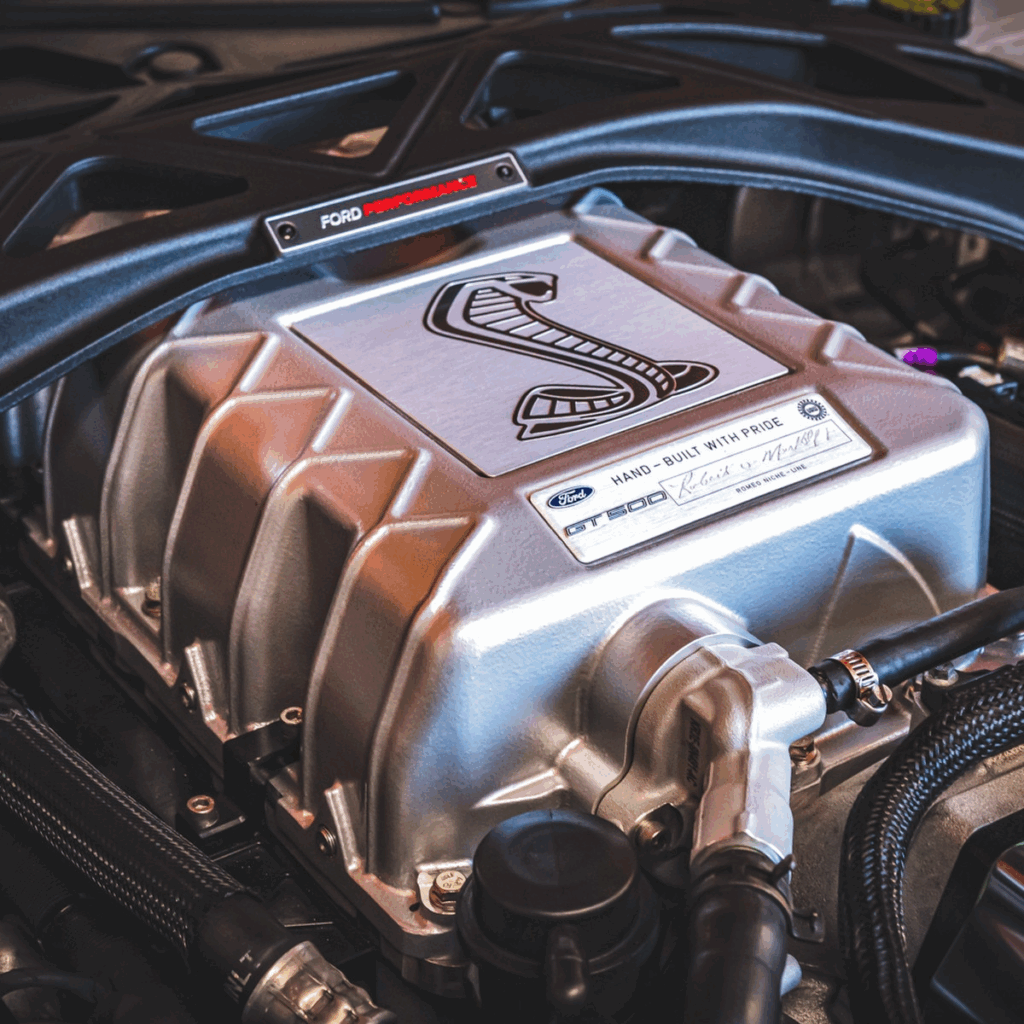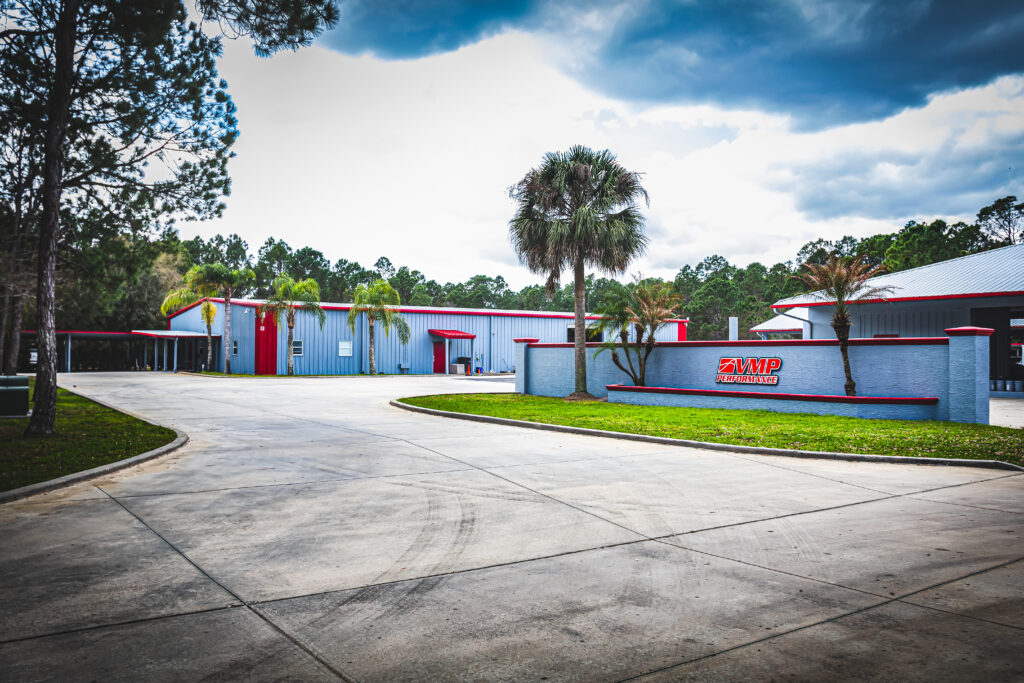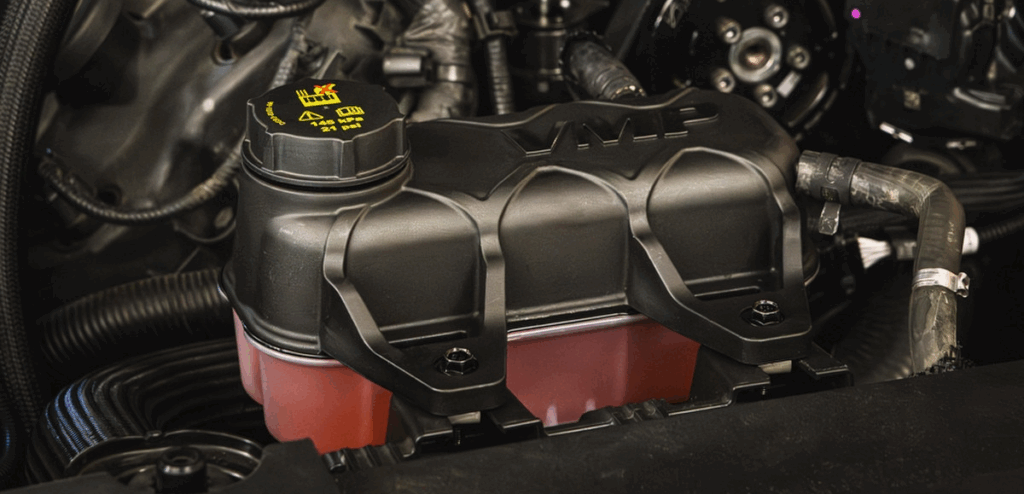Moving Air—How to Select the Best Intake to Feed Your Naturally Aspirated Coyote Engine
VMP Coyote Intake Manifold Shootout
VMP Performance is well known by Mustang enthusiasts for its line of TVS superchargers and its powerful and reliable tuning. We love horsepower, and we’re devoted to the science of increasing output no matter the budget or style of engine. We pride ourselves on developing new technology and digging deep to find horsepower and torque for our customers.
When the topic of Coyote intake manifolds recently came up, we set forth to learn more. Most manifolds are interchangeable between any 2011-present Mustang GT 5.0 L and the 5.2 L Voodoo engine found in the Shelby GT350. Manifold swaps on the Coyote are relatively easy and affordable. Hood clearance may be a concern when using the Boss or Cobra Jet on certain applications. Therefore, intake manifold swaps have the potential to provide a great bang for the buck.
Extracting horsepower and torque from any internal combustion engine requires feeding a precise mixture of oxygen and fuel to the cylinders, igniting the mixture with a timed spark, and harnessing the heat energy released from the fuel. The release of heat energy gives us the push on the pistons and power at the wheels.
If you can increase the amount of oxygen to the cylinders, you can burn more fuel and make more power. One way to achieve this is with an intake that’s properly matched to the displacement, cams, exhaust, and compression ratio of the vehicle. To learn more, we gathered six readily available Coyote intakes for our extensive naturally aspirated intake manifold test.
“There use to be very few options for Coyote intakes,” said Justin Starkey, President of VMP Performance. “Now there are more than a half-dozen options, including factory intakes and a few aftermarket versions. And in addition to stock intake, we can modify an existing intake for better flow by opening the throttle body area and trimming material near the injector bosses,” he added.
Depending on the application, the best intake for your combination may be the one producing the most horsepower, the most torque, or the best average power. It should be noted that with a little work, most manifolds are interchangeable between any 2011-present Mustang GT 5.0 L and the 5.2 L Voodoo engine found in the Shelby GT350. Manifold swaps on the Coyote are relatively easy, affordable. You will have to check for hood clearance when using the Boss or Cobra Jet on certain applications.
Our test was completed on Track Attack, our 2017 Ford Mustang GT originally built for the SEMA show. It features a stock 2017 5.0 L Coyote engine with improved breathing from a JLT Performance Cold-Air Intake, Dynatech long-tube headers, Dynatech X-pipe with cats, and Cervini’s side exhaust. It runs on 93-octane fuel and has a VMP Performance tune. “These modifications represent what many 2015-2017 Mustang owners have, so the information will be incredibly helpful,” added Starkey.
Feeding Track Attack
The contenders consisted of a stock 2015-2017 Coyote intake, a 5.0 L truck intake, the free-flowing Shelby GT350, a 2018 Mustang GT manifold, a ported 2018 GT intake, a Boss 302 unit, and lastly the Ford Performance Cobra Jet intake. This was not so much a battle for all-out horsepower as it was an experiment to determine which produced the best power and the best bang for the buck (on our combination).
While many of the intakes looked similar, they offered differences in the plenum and runner size. Larger plenum and runners are often used when more airflow is required. The plenum and runners combine to feed air and atomized fuel to the intake ports in the cylinder heads. Size, shape, and volume of the plenum and runners are key components of intake design, because for the most part, they dictate the horsepower and rpm potential of the engine.
Simply stated, long-runners promote lower-to-mid-rpm power, while shorter runners are more efficient at high rpm. And so, changing the length and taper of the runner can move hp and torque up or down as well as broaden your torque curve.
Runner length affects rpm because for any given rpm, there is a specific amount of time the intake valve is open, so you’ll want the column of air traveling in the intake runner to provide maximum velocity for each engine cycle. Filling the cylinder starts with the downward stroke of the piston, which creates a pressure drop in the cylinder. When the intake valve opens, air rushes in because pressure in the intake is higher than in the cylinder. And as we know, pressure always tries to equalize. However, since the intake valve is only open for a brief moment, maximum velocity of the air/fuel mixture is required to effectively “fill” the cylinder and achieve high volumetric efficiency.
This is why the biggest intake isn’t always the best. Intake sizing is based on displacement, camshaft selection, compression ratio, desired rpm, gearing, and vehicle weight. These are all factors that should be considered.
With that, the intakes in our test vary in runner length, plenum volume and even design. Five of the intakes feature a long-runner design, with the Boss 302 and the Ford Performance Cobra Jet utilizing a raised box plenum and shorter runners. Six of the manifolds accept a round, factory-style throttle body, with the Cobra Jet intake requiring an oval unit.
The Test
Each manifold was bolted on to our Mustang and run to redline. Our test provided an amazing amount of useful data. We learned there’s virtually an intake for everyone, whether you’re after low-end torque, high-end horsepower, or an average of both.
We started with the 2018 Mustang GT intake. This provided a great starting point since it’s such an easy upgrade. It produced a peak of 457 rear-wheel horsepower and 391 lb·ft of torque. The team then swapped on a ported version and the gains were instant. Track Attack jumped to 462/402 for output, a nice gain for a little extra work.
Following the stock ’18 manifold we installed the ported 2018 intake. This manifold benefited from minor cleanup of of the ports and trimming around the injector bosses. Justin ran the test and the results were awesome. The ported intake produced 462 horsepower and 402 lb·lf of torque and it extended the useable power range by a few hundred rpm.
The next choice was the Shelby GT350 intake, so we bolted that to our GT. Power slipped a bit to 457 and 397 lb·ft of torque. While the GT350 intake is bigger, the 2018 manifold was better matched to the smaller displacement, cams, compression ratio, and the smaller heads.
Next up was the Boss 302. As we stated earlier, the Boss features a tunnel-ram design with shorter runners. This intake gave up some, producing 450 rwhp and 392 lb·ft of torque.
Off came the Boss and on went the 5.0 L Coyote Truck intake. Truck engines are typically designed for low-rpm torque. In this case, the F-150 intake gave our Mustang more grunt in the low range. Torque was much higher, with a peak of 413 lb·ft at the tires. There was only a small loss in power compared to the 2018 intake (453 for the truck and 457 for the 2018 GT). The truck intake ran out of steam at 6,500 rpm. We’re not sure it would be a great choice for your Mustang.
The original 2017 intake performed much like the truck intake, producing similar power and breathing capabilities. By 6,500 rpm is was out of gas, proving there’s power on the table for even a mildly modified 2015-2017 Mustang GT with a simple intake manifold swap.
Lastly, we swapped on the Ford Performance Cobra Jet intake that was designed for the factory-built racer. Peak power equaled the ported 2018 GT, but it averaged 462 for almost 1,000 rpm providing more average power than the ’18 intake. Torque was virtually equal to the 2018 intake and this is on an engine with stock cams and heads. No doubt we’d see huge gains with this intake on an engine with ported heads and with aftermarket cams.
To compliment the test, we created a video so you can watch and hear each manifold in action. Justin Starkey, president of VMP takes you through a detailed account of each test. We provide horsepower and torque results so you can compare each intake.
Sign Up For Our Newsletter
Stay up-to-date to get up-to-date information on new products, news, and VMP sales!

